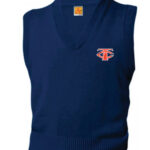The early years of the National Park Service (NPS) saw a fascinating convergence of civilian conservation efforts and military influence, most notably reflected in the nascent park ranger uniforms. As the NPS sought to establish a distinct identity, it frequently looked to the readily recognizable and authoritative image of the United States military, and in particular, the United States Cavalry Uniforms, for inspiration.
初期の国立公園局(NPS)では、民間人の保護活動と軍の影響が興味深く融合し、最も顕著に現れたのは、初期の公園レンジャーの制服でした。NPSが独自のアイデンティティを確立しようとした際、しばしば目に留まったのは、アメリカ軍、特にアメリカ騎兵隊の制服の、すぐに認識でき、権威あるイメージでした。
Orders from Sequoia National Park in the early 20th century provide a glimpse into this connection. When requesting uniforms from Sigmund Eisner, the specifications included shirts made from “U.S. Army standard cloth,” an olive drab flannel, priced at $2.75 each. Eisner explicitly noted these shirts would feature a “turn down collar and two outside pockets same as U.S. Army regulation shirt.” This direct adoption of army standards highlights the prevailing influence of military attire on the emerging ranger uniform.
20世紀初頭のセコイア国立公園からの注文は、このつながりを垣間見せてくれます。ジークムント・アイスナーに制服を注文した際、仕様には「アメリカ陸軍標準布」であるオリーブドラブのフランネル製シャツが含まれており、価格は1枚2.75ドルでした。アイスナーは、これらのシャツには「アメリカ陸軍規定シャツと同じように、ターンダウンカラーと2つの外ポケット」が付くと明記しました。この陸軍規格の直接的な採用は、新しく登場したレンジャーの制服に軍服の影響力が強く及んでいたことを示しています。
Interestingly, not all park locations immediately embraced uniforms. Lt. Col. Lloyd Milton Brett, acting superintendent at Yellowstone National Park, noted that his rangers (“scouts”) preferred plain clothes for game protection and detective work, where a uniform “could be too easily recognized.” This highlights a tension between the desire for a uniformed, authoritative presence and the practical needs of early park rangers performing diverse duties, some of which required a less conspicuous appearance.
興味深いことに、すべての公園で制服がすぐに受け入れられたわけではありません。イエローストーン国立公園の代理監督官であるロイド・ミルトン・ブレット中佐は、レンジャー(「偵察隊」)は、制服が「犯罪者に遠くからでも簡単に見分けられてしまう」ため、狩猟保護や捜査活動には普段着を好むと述べました。これは、制服を着た権威ある存在への願望と、初期の公園レンジャーが多様な職務を遂行する上での実用的なニーズ(その一部は目立たない外見を必要とした)との間の緊張関係を浮き彫りにしています。
Despite initial hesitations in some parks, uniform orders began to increase. Most requests were for the #2 (winter) style, featuring two outside bottom pockets, further mirroring the functional design elements often seen in military field uniforms. Even when rangers at Mount Rainier requested the #1 (summer) style coat (without outside pockets), they were ultimately provided with the #2 style to maintain uniformity across orders, underscoring the developing standardization within the NPS uniform system and its lean towards practical, military-inspired designs.
一部の公園での当初の躊躇にもかかわらず、制服の注文は増加し始めました。ほとんどの注文は、軍隊の野戦服によく見られる機能的なデザイン要素をさらに反映した、2つの外ポケットを備えた#2(冬)スタイルでした。マウントレーニアのレンジャーが#1(夏)スタイルのコート(外ポケットなし)を要求した場合でも、最終的には注文全体の統一性を維持するために#2スタイルが提供され、NPSの制服システム内での標準化の進展と、実用的で軍隊風のデザインへの傾斜が強調されました。
Photographs from this era further illustrate the military influence. A portrait of Sequoia ranger Charles W. Blossom shows him wearing a 1912 National Park Service uniform coat. Notably, the coat features a “rise-and-fall military collar” reminiscent of the 1910 U.S. Army uniform coat. This design choice explicitly links the NPS uniform to contemporary military styles. Furthermore, Blossom’s coat displays “U.S. military insignia on the collar,” identical to insignia seen in 1910 photographs of military personnel, solidifying the visual connection between early ranger attire and United States military uniforms.
この時代の写真は、軍の影響をさらに示しています。セコイアのレンジャー、チャールズ・W・ブロッサムの肖像写真は、彼が1912年の国立公園局の制服コートを着ている様子を示しています。特筆すべきは、このコートが1910年のアメリカ陸軍の制服コートを彷彿とさせる「立ち襟」を備えていることです。このデザインの選択は、NPSの制服を当時の軍服スタイルに明確に結び付けています。さらに、ブロッサムのコートには「襟にアメリカ軍の記章」が表示されており、これは1910年の軍人の写真に見られる記章と同じであり、初期のレンジャーの服装とアメリカ軍の制服との視覚的なつながりを確固たるものにしています。
Perhaps the most telling image is a photograph from Sequoia National Park circa 1912, depicting a U.S. Cavalry captain standing between two park rangers. The ranger on the left is wearing the 1912 “Eisner” coat, while the ranger on the right is in a civilian-style Norfolk jacket. This image vividly juxtaposes the formal, military bearing of the cavalry captain with the evolving uniforms of the park rangers. The ranger in the Eisner coat, with its military-style collar and cut, visually bridges the gap between civilian park service and established military authority, illustrating the deliberate adoption of military uniform elements in the creation of the National Park Ranger identity. The presence of the cavalry captain further underscores the context of military influence during this formative period of the National Park Service.

